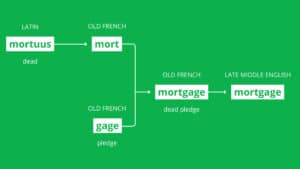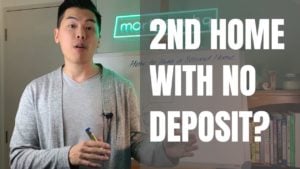If you didn’t already know, (it’s OK if not, that’s what we are here for!), but there is more than just the one way to pay off your mortgage. We briefly touched on the different types of repayment structures that you can choose from in this article. One of these ways is an offset mortgage.
When used correctly, an offset mortgage account can speed you into financial freedom faster than you ever thought possible. For those of you who are organised and disciplined, or in other words, eager to achieve your goals, this might be the repayment structure made for you.
Just because a standard 30 year long table loan is the most common of loans in New Zealand, does not mean it should apply to you. Brave, forward thinking and well-educated people are the ones who step out of their comfort zones and away from the norm. These individuals find a solution that suits them.
Understanding how to structure your mortgage is just one of the many ways that you can pay off your mortgage faster and reach your financial goals.
If you’re interested in knowing more about an offset mortgage, then read on to find out more.
What is an offset mortgage?
By using the money you have in your cash savings accounts, you can reduce the interest that you pay on your mortgage. No, you don’t need to throw everything you have at your home loan and live on a restrictive, tight budget, you can still use your money as you normally would.
You can continue to save for holidays or a new car. If you enjoy placing your cash in different accounts because this helps you to remain on track and organized, that’s alright too.
You can use these cash accounts to ‘offset’ your home loan.
Multiple accounts can be linked to the one mortgage, so you, your partner and even your parents can help to reduce monthly interest on your debt by taking advantage of an offset mortgage NZ.
For those parents who are looking to support their children financially somehow but are keenly aware that they need to secure themselves for retirement, then an offset mortgage explains a way to achieve this. Rather than handing large sums of cash over, you can attach a savings account to their home loan and reduce the amount of interest they need to repay month on month.
Although the benefits lie with the home loan owner, the savings account remains in the possession of the holder, so there is no risk of anyone losing control of what is theirs.
Because interest saved from offsetting a home loan as much as possible generally outweighs any interest earned in a savings account, those who have accumulated money and have a mortgage may find it more financially reasonable to consider this path than other available repayment schedules.
How does an offset mortgage differ to other repayment schedules?
Speaking of available repayment schedules, there are a few to consider when deciding to obtain a home loan from a bank. Without doing the necessary research yourself, you might be signing up for 30 years of unnecessary hardship.
Let’s take a look at the available loan types we have here in New Zealand and how they differ from an offset mortgage. Bear in mind that not all NZ banks offer a mortgage with an offset account currently, but we will touch on that later in the article.
- Table loan
This is the most common repayment structure available here in NZ. A table loan is when you have a set number of years to repay your home loan with regular repayments. You repay the interest earlier within the schedule and the principal is paid later on.
The amount you repay on your total loan is reduced when you have offset your mortgage with any savings that you have in separate accounts. This is especially true when you are inclined to use a floating or variable interest rate. This tends to be a little bit higher than a fixed rate, something that is generally not used with offset mortgage rates.
- Reducing loan
A reducing loan consists of payments that start off high and reduce over time. Every month you repay the same amount of the principal whilst reducing the amount of interest. Again, we can see the difference here between an offset mortgage and a reducing loan with the impact of interest. By including additional accounts, we can reduce the interest paid from early on.
- Interest-Only
As the name suggests, this is a type of repayment structure that only focuses on paying the interest accumulated each month. With an offset loan, you are still seeking to eliminate your loan over time. In fact, because you pay less interest, you can achieve this goal sooner. Interest-Only loans tend to be suitable for certain property investors.
- Revolving credit loan
A revolving credit loan involves a single account where all of your income and payments are entered into. With daily calculated interest, you reduce interest paid by having accumulated cash that offset the loan.
This sounds a lot like an offset mortgage, with a key difference being the amount of accounts that you can link. A revolving credit loan is a single account, where an offset loan can be multiple.
There are other differences as well, which we will go into further depth with. Take a look at this video which also goes over the differences between revolving credit and offset mortgages.
A revolving credit loan and an offset mortgage sound the same. What’s the difference?
Because both repayment structures are so similar, it can be difficult to determine what one is better. Let’s find this out.
Of course, everyone’s financial situation is different, so we do suggest that if you’re unsure, you speak with a mortgage advisor here at mortgagehq. We can identify your position and provide tangible advice and information to help you to make the right decision regarding your home loan.
If you would like to take the time to understand exactly what a revolving credit facility actually is, you are going to better understand the differences between these two repayment structures. You can learn more about revolving credit, here.
There are three key differences.
- Functionality.
A revolving credit loan is essentially an overdraft account. You need to add your savings into that account in order to take advantage of any offset of interest payments that you can benefit from. You are free to remove those savings when necessary.
An offset home loan provides the same benefit. However, it allows you to directly link your savings accounts to the existing home loan one. This, for many, is an improvement in functionality.
- Terms
A revolving credit loan is always set to require you to repay the interest only each month. The interest is calculated daily and repaid at the end of the month. An offset mortgage, however, can be both interest and principal. Interest is also calculated daily. If you choose to set your offset mortgage to force you to repay both the interest and some of the principal each month, then you are not needing to actively put more money into your home loan account to pay off your mortgage faster.
Interestingly, if you are a property investor, your servicing capacity is slightly reduced when you choose an offset mortgage with interest only repayments. Even though an offset mortgage with interest only repayments is effectively the same as a reducing loan. This is because the bank will use a shorter term to calculate your capacity.
There is no real difference in amount between the calculated servicing capacity of a reducing loan and an offset home loan with the interest and principal function added.
- Availability
Every main NZ bank offers a revolving credit facility. This is not true for an offset account mortgage. We will discuss in more depth what each bank offers a little later in this article, identifying the best offset mortgage accounts and what they look like.
Banks generally have a limit of around $200k to $350k that can be offset in a revolving credit loan but there are no such limitations in an offset mortgage. For those investors and property owners who have significant amounts of money in trading accounts for example, an offset mortgage can be highly desirable.
So there are some key differences between an offset mortgage vs revolving credit. But what one is better?
If you’re a property investor, an offset account mortgage often pips a revolving credit with that little bit more flexibility. You can use multiple rental accounts to offset your mortgage for example.
When should I get an offset mortgage account?
For those of you with any amount of cash in any accounts held in your name would likely benefit from using an offset account. As we have said before, any interest earned separately in these accounts would likely be less than the interest saved by combining this cash to your home loan offset account.
You do risk breaking your contract by switching in certain situations, such as when you are on a fixed term debt. So it is when you are structuring or refixing your mortgage, this is the best time to consider switching to an offset mortgage account.
We can produce data from your financial accounts to quickly show you the financial impact of deciding to break your contract to switch to an offset mortgage so that you can easily determine when the best time to move to an offset mortgage may be.
We are also able to help you identify if moving to a mortgage with an offset account will benefit you. To learn more about becoming mortgage-free and to access other products that work alongside offset mortgages, check out our Masterclass #1.
Is an offset mortgage right for me?
As an offset mortgage offers heaps of flexibility with how you can control your money, many people find that their offset home loan works for them better than other structures might.
Those who would benefit from an offset mortgage would include, but are not limited to:
- Individuals with multiple cash accounts, such as rental accounts
- Those who have family members that are cashed up (entering retirement perhaps), and are happy to link accounts to offset mortgage
- People comfortable with a floating rate
- Anyone with some savings to their name that allows them to offset the interest payments of their home loan.
- Anyone hoping to pay off their mortgage faster
- People who like the idea of putting additional cash, such as bonuses, towards paying off their mortgage but don’t want to be hit with fees for it
- Also, people would like to be able to potentially withdraw any lump sum deposits again later for some reason
Are there any problems with an offset home loan?
As good as this repayment structure sounds, an offset home loan may not be the right way to tackle your mortgage debt. Here are some of the factors to watch out for:
Many people pay off their debt faster in this manner, although some succumb to bad spending habits. When you have so much freedom with your finances and you can continue to accumulate debt, you may find yourself moving backwards if you’re not careful.
This video highlights some of the pitfalls of moving your accounts into a single unit, either with a revolving credit facility or an offset mortgage. Do take a look if you would like to learn more about it.
Because you are linking your savings account into one of larger debt, then we do need to recognize that you will not be earning any interest from your savings.
Alos, be mindful that the accounts you seek to offset your mortgage with do need to be in the same name. Kiwibank allows up to 8 accounts to be linked to a single offset mortgage and they can be from a personal account, joint borrowers, parent or child’s account.
So this means that if you have a complex structure whereby you have some savings accounts in a business name and some in a personal one, you may find you are unable to gain maximum benefits from this repayment structure. Trusts are also unable to be joined into an offset mortgage.
Should you be in a position such as one just mentioned, speak with a mortgage advisor. We can strategize together to enable the best benefits to be realized for you.
Floating interest rates can have their advantages and disadvantages. With interest rates now rising, expect to pay more and more interest month on month than you would if you fixed your rate at a lower price.
Offset mortgage accounts incur an administration fee, somewhere around the $10 per month margin. You do need to factor this in.
Your entire mortgage does not need to be placed into an offset mortgage account. We generally see between $50k to $200k in this floating rate, offset by savings, whilst the rest of a mortgage may be repaid on a fixed rate. This offers you flexibility and stability at the same time.
What banks use offset mortgages?
As you are bound to know, each bank here in New Zealand offers a unique set of terms and conditions when it comes to your home loan agreement. A mortgage advisor has specific experience to understand every bank’s position, their latest offers and to determine which bank would best suit their client.
There is no other way to gain this kind of broad knowledge. It would take you as long to research policies as new ones emerge. Although bankers understand their policies in depth, they cannot recommend another bank to you if what they offer isn’t ideal.
Let’s take a look at the common NZ banks and what their best offset mortgage accounts look like.
Westpac offset mortgage
Called a Choices Floating Home Loan, Westpac’s offset mortgage allows a loan term of up to 30 years, allows one off lump sum payments and gives you this flexibility to split your entire mortgage between this type and a different repayment structure.
There are accounts that can and cannot be linked which are clearly shown on their website.
ANZ offset mortgage
There is currently no ANZ offset mortgage option for New Zealand customers. They offer a revolving credit facility called a Flexible Home Loan.
As you know, there are similarities between a revolving credit loan and an offset mortgage, but key differences as well.
Kiwibank offset mortgage
Conveniently named an offset home loan, Kiwibank’s offset mortgage package currently offers a lower floating interest rate than other banks. You can mix it up and combine this mortgage structure with another, link and unlink savings accounts easily and make lump sum repayments, all benefits of an offset mortgage account.
ASB offset mortgage
ASB does not offer an offset mortgage option as explained here. You are directed to their two different revolving credit loan repayment options, Orbit and OrbitFastTrack. OrbitFastTrack is a reducing option, meaning you can pay off your loan rather than just the interest as is the norm with revolving credit options.
BNZ offset mortgage
A BNZ offset mortgage is called the TotalMoney home loan. You can link up to a whopping 50 accounts to this home loan account for only the standard $10 a month. You also have the added benefit of every savings account with balances above $100,000 earning interest of 0.05% pa, on top of reducing the interest that you earn.
This is great for those who are dealing with larger quantities of money.
Considering a different lender?
Only three of the main banks in New Zealand currently offer an offset mortgage. That is Westpac, Kiwibank and BNZ. Non-traditional lenders, such as NBS or NZHL do not offer offset mortgages with the likes of ANZ and ASB, however, revolving credit facilities are available.
This however, can change at any time. Get in touch with us here at mortgagehq directly for the most up to date information regarding not only who offers an offset mortgage, but who has the best current floating interest rates as well.
We can also offer seasoned advice regarding trends that may give you the confidence to make a decision regarding your home loan options.
Best offset mortgage rates
Floating or variable rates are accepted with offset mortgages. If you’re looking for the dependability of a fixed rate in addition to the flexibility and control that a mortgage with offset account offers, then consider splitting up your mortgage into two different repayment structures.
Half of your home loan can be on a fixed rate table loan whilst the other half can be held in an offset account on a revolving rate. Banks are happy to provide this service, or you can get in touch with a mortgage advisor to support you through this process.
We have an up to date guide to mortgage rates in NZ available at mortgagehq, to quickly allow you to consider your options regarding the different options you have here in NZ.
Just to clarify:
- A fixed rate is when you lock in the current interest rate for a predetermined amount of time. It could be from 6 months to five years. A fixed rate is higher than a floating rate, but that does not mean it will always remain higher.
- A variable rate is lower but it is subject to change. This means that you can pay less one month and more the next, if your bank decides to increase their interest rates.
Rates are constantly changing and it can be difficult to judge these movements. When calculating how much you are able to afford with a mortgage calculator, be sure to consider a rise in interest rates and factor this in. Banks will always calculate a higher interest rate when determining your risk.
If you would like to learn more about how much you can afford on your mortgage, then be sure to look into our library of information for support.
Are you ready for a change?
If you’re thinking of moving to a mortgage with an offset account, then get in touch with one of our team members.
We will talk you through the basics of, refinancing, transferring your mortgage to another bank or restructuring your current mortgage so that you can enjoy the benefits that an offset mortgage NZ can provide.
For those of you with:
- Savings accounts
- A support network of family who have savings accounts
- And a desire to pay off your mortgage faster
Then considering an offset mortgage account in NZ may be your ticket to saving $1000s.













